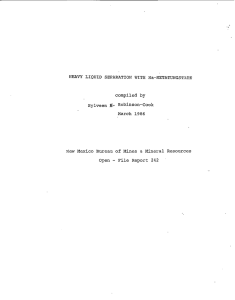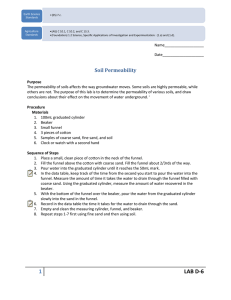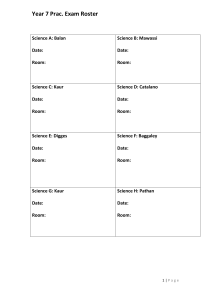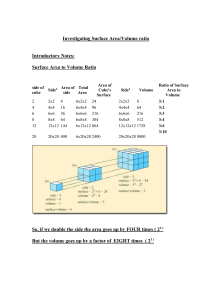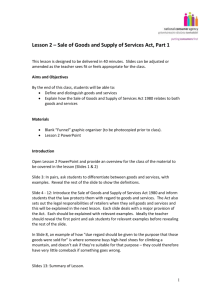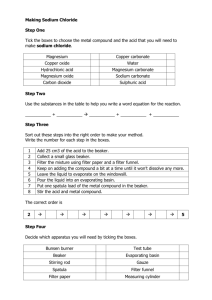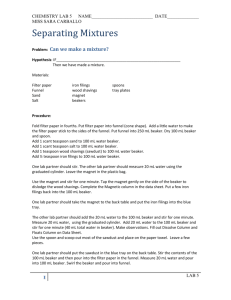Water Cycle Experiment: Infiltration
advertisement
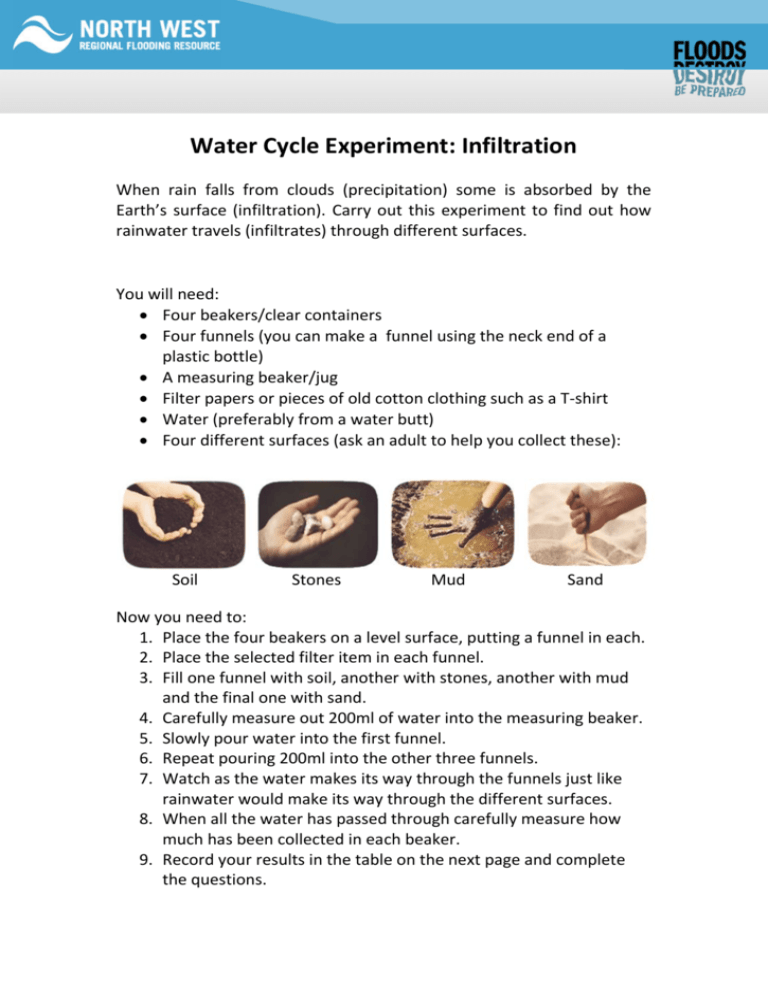
Water Cycle Experiment: Infiltration When rain falls from clouds (precipitation) some is absorbed by the Earth’s surface (infiltration). Carry out this experiment to find out how rainwater travels (infiltrates) through different surfaces. You will need: Four beakers/clear containers Four funnels (you can make a funnel using the neck end of a plastic bottle) A measuring beaker/jug Filter papers or pieces of old cotton clothing such as a T-shirt Water (preferably from a water butt) Four different surfaces (ask an adult to help you collect these): Soil Stones Mud Sand Now you need to: 1. Place the four beakers on a level surface, putting a funnel in each. 2. Place the selected filter item in each funnel. 3. Fill one funnel with soil, another with stones, another with mud and the final one with sand. 4. Carefully measure out 200ml of water into the measuring beaker. 5. Slowly pour water into the first funnel. 6. Repeat pouring 200ml into the other three funnels. 7. Watch as the water makes its way through the funnels just like rainwater would make its way through the different surfaces. 8. When all the water has passed through carefully measure how much has been collected in each beaker. 9. Record your results in the table on the next page and complete the questions. Surface How much water has ‘infiltrated’ through into the beaker? How much water has been absorbed? HINT: Subtract the amount of water in the beaker from 200ml. Soil Stones Mud Sand QUESTIONS: Which surface absorbed the most water? _____________ Which surface allowed the most water to ‘infiltrate’? _____________ What do these results tell you? ____________________________

